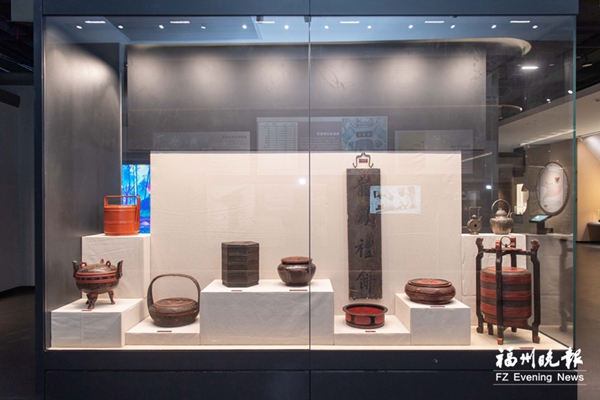Food Utensils Used by “Ancestors” in Fujian Cuisine Culture Museum
Food as the first necessity of the people becomes more attractive because of exquisite food utensils. Chinese food culture is extensive and profound. People pursue not only delicious dishes, but also an esthetic and sensory pleasure when enjoying food, so they are extremely particular about food utensils to ensure a feast for the stomach and eyes. Let's walk into the Fujian Cuisine Culture Museum to take a look at a rich variety of food utensils in the museum, and learn about the aesthetic taste of ancestors in food.

Interior of Fujian Cuisine Culture Museum
The gray pottery rice retort in the Song Dynasty, the pottery pitcher with three legs in the Tang Dynasty, the green-glazed tray with five cups of Huaian Kiln in Fuzhou in the Tang Dynasty ... There are all kinds of exhibits in the museum, including tableware, wine utensils and tea sets from the ancient Paleolithic Age to modern society.
Many of the tableware in the museum represent the attainments of Fuzhou in lacquer arts, showing the impact of the prosperous lacquer industry in history on the daily life of the people.
An elegant bodiless lacquer food box of the Qing Dynasty attracts many visitors to stop to take photos with its delicate lacquer painting and vivid patterns of calligraphy and painting. Its origin is even more remarkable, since it was a wedding gift given by Lin Congyi and Lin Gongshu, sons of Lin Zexu, to their nephew in the 30th year of the Daoguang period.
The four-layer carved lacquer box of the Qing Dynasty in the museum can be cross-referenced with the three-layer carved lacquer box of the Southern Song Dynasty displayed in Fuzhou Museum. The carved lacquer food box of the Qing Dynasty exhibited in the Fujian Cuisine Culture Museum reflects the aesthetic and pursuit for food utensils of the upper class, literati and officialdom in Fuzhou in the Qing Dynasty.
All kinds of wine utensils are also a highlight of the Fujian Cuisine Culture Museum.
The Ping’an tin wine pot in the late Qing Dynasty is rich in meaning and worth seeing. The tin wine pot looks like a gourd, which implies "good fortune," and the dragon and phoenix decorations on the spout are "symbols of good fortune." In the ancient concept, the dragon represents the male, the phoenix represents the female, and generally the dragon is above the phoenix. However, on the tin wine pot, the phoenix is above the dragon, which indicates the infiltration of political atmosphere into the folk culture during the reign of Empress Dowager Cixi in the late Qing Dynasty.
Yuanbao Wine Warmer is a large tin wine warmer weighing about 25 kg. It is one of the typical utensils in the Fuzhou wine culture. “Fujian rice wine is best served warm. As tin conducts heat, put the wine warmer in hot water for a while, and the rice wine will be warm,” said the guide. Such wine warmers were generally placed at the front desk of stores in the past. Lots of restaurants used them in the period of the Republic of China. (Article by Fuzhou Evening News reporter Quan Yiyue, correspondent Ye Junhao; Photo by reporter Lin Shuangwei)